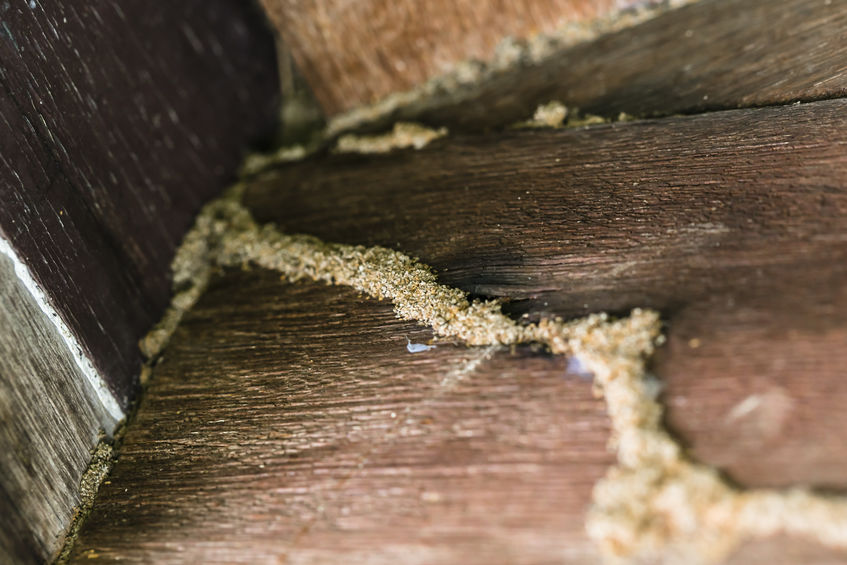Many pest control professionals consider subterranean termites to be the most difficult insect pests to control due to their concealed habitat beneath the ground where they remain hidden from view at all times. In fact, subterranean termites must constantly remain within moist soil or wood in order to avoid the desiccating effect of outside air. Detecting subterranean termite infestations within homes requires a thorough and long-lasting inspection by trained and licensed professionals. The worker termites that are active within homes only represent a small minority of the total number of individual termites living in the colony, and the colony must be destroyed in order to eliminate infestations. Considering that colonies are virtually impossible to pinpoint, eliminating subterranean termite infestations is exceedingly difficult. Luckily, there exist three effective termite treatments that pest control professionals apply to properties in order to protect homes from subterranean termite attacks. These three subterranean termite control methods include repellent liquid termiticides, non-repellent termiticides, and bait systems.
Repellent termiticide perimeter treatments have provided homeowners with reliable protection from subterranean termite attacks for decades. This treatment sees pest control professionals dig a trench around a home’s exterior foundation walls, and this trench is filled with repellent termiticide. This trenching system is also applied around interior foundation walls of crawl space homes. In order to apply a termiticide barrier beneath concrete slabs, pest control professionals inject termiticide through small holes they drill into the slab. Non-repellent termiticide perimeter treatments are applied in the same way as repellent treatments, but unlike repellents, subterranean termite workers are unaware of their exposure to non-repellent termiticides. Non-repellent termiticides kill workers slowly, which allows them to spread the toxic chemicals to their nestmates, resulting in several termite fatalities. The main difference between these two treatments is that non-repellent termiticides kill termites, while repellent termiticides do not, but both treatments provide protection from subterranean termite attacks for at least five years, or until a retreatment is deemed necessary by a pest control professional.
Is your home protected from subterranean termite attacks?

